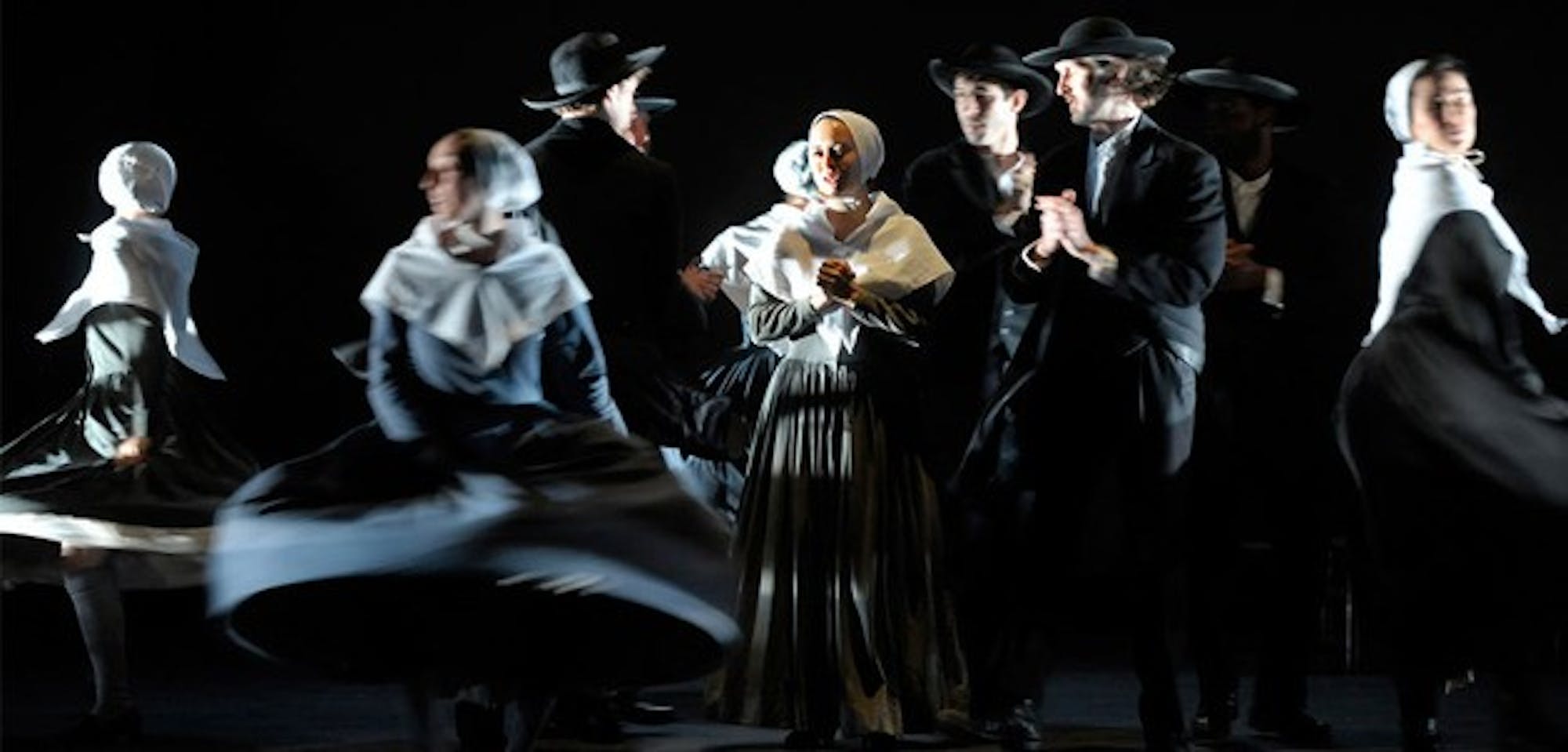"Angel Reapers," which was performed on Friday and Saturday night in Spaulding Auditorium, tells the story of Ann Lee, who founded the Shaker movement. Set in the late 1700s near the end of Lee's life, the performance takes the audience through Lee's visions and those of her followers.
In 1774, Lee and eight followers came to America to spread Lee's gospel. They called themselves the United Society of Believers in Christ's Second Appearing, but because Lee believed that sin could be purged from the body through dancing and gesticulating movements, they became known as the Shakers. Lee believed in celibacy and preached a very strict way of life, thinking that sex was the root of all evil.
The show opens with an elderly Lee sitting in a simple wooden chair in an austerely furnished room, then flashes back about a decade to when the Shaker community was at the height of its power. The authentic Shaker songs, dancing and dialogue take the audience back to a time when women and men slept on opposite sides of the hall. Characters on stage wake up at the crack of dawn and work throughout the day in near silence, only pausing to recite the tenets of their community, such as "Sisters must not mend brethren's clothes while they are still on," and "When we clasp our hands, our right thumbs and fingers should be above our left."
The strict rules of this community fail to completely quash sexual desire, however, striking at the heart of the Shakers' belief system. First, a young couple is banished after falling in love. When a married husband and wife then join the sect, they are forced to practice celibacy, but the husband becomes so frustrated that he sexually assaults his wife. Lee herself develops an attraction for her brother and second-in-command, William. The men try to rid themselves of carnal desires by dancing naked and singing Shaker songs.
Eventually, disenchanted with their austere celibate lifestyles, prominent followers, including William, begin to desert the community. Bitterly alone, Lee begins to waste away and eventually dies.
Although at times the intense combination of rhythmic dancing, a cappella singing and speaking in Shaker tongue is overwhelming and makes the plot difficult to follow, it certainly injects a sense of authenticity into the performance. Costume designer Donna Zakowska, who has also worked with the Big Apple Circus and Mick Jagger, and set and lighting designer Christopher Akerlind, a longtime collaborator with Martha Clarke, keep the performance true to the era as well. The lighting is dim and soft, creating a candlelight effect, and Zakowska recreates the traditional Shaker garb perfectly.
Where "Angel Reapers" truly shines, though, is the dance choreography. The performers' vocals had their weak moments, and the dialogue was not always convincingly delivered, but the dancers' passionate delivery gave life to the Shaker characters who used their wild, gesticulating movements to try and compensate for all of their repressed sexual desires. The cast succeeds in collectively displaying the unresolved tension that simmers beneath the surface of this strait-laced community.
"Angel Reapers" employs a unique blend of different art forms thanks to a collaboration between Pulitzer, Tony and Academy Award-winning writer Uhry and MacArthur Genius director and choreographer Clarke. Uhry first became intrigued by the Shakers when he rented a cottage in upstate New York in the 1970s and began admiring the beautiful furniture they made. He had seen much of Clarke's work over the years and decided that she was the only person who could help him produce a theater work about the Shakers.
"Angel Reapers" ultimately succeeds in highlighting the conflict between piety and human desire during the time of the Shakers. The show transports the audience three centuries back in time, but what is truly powerful about the performance is that it explores a dichotomy that is still present in our society today the battle between morality and sexuality.




